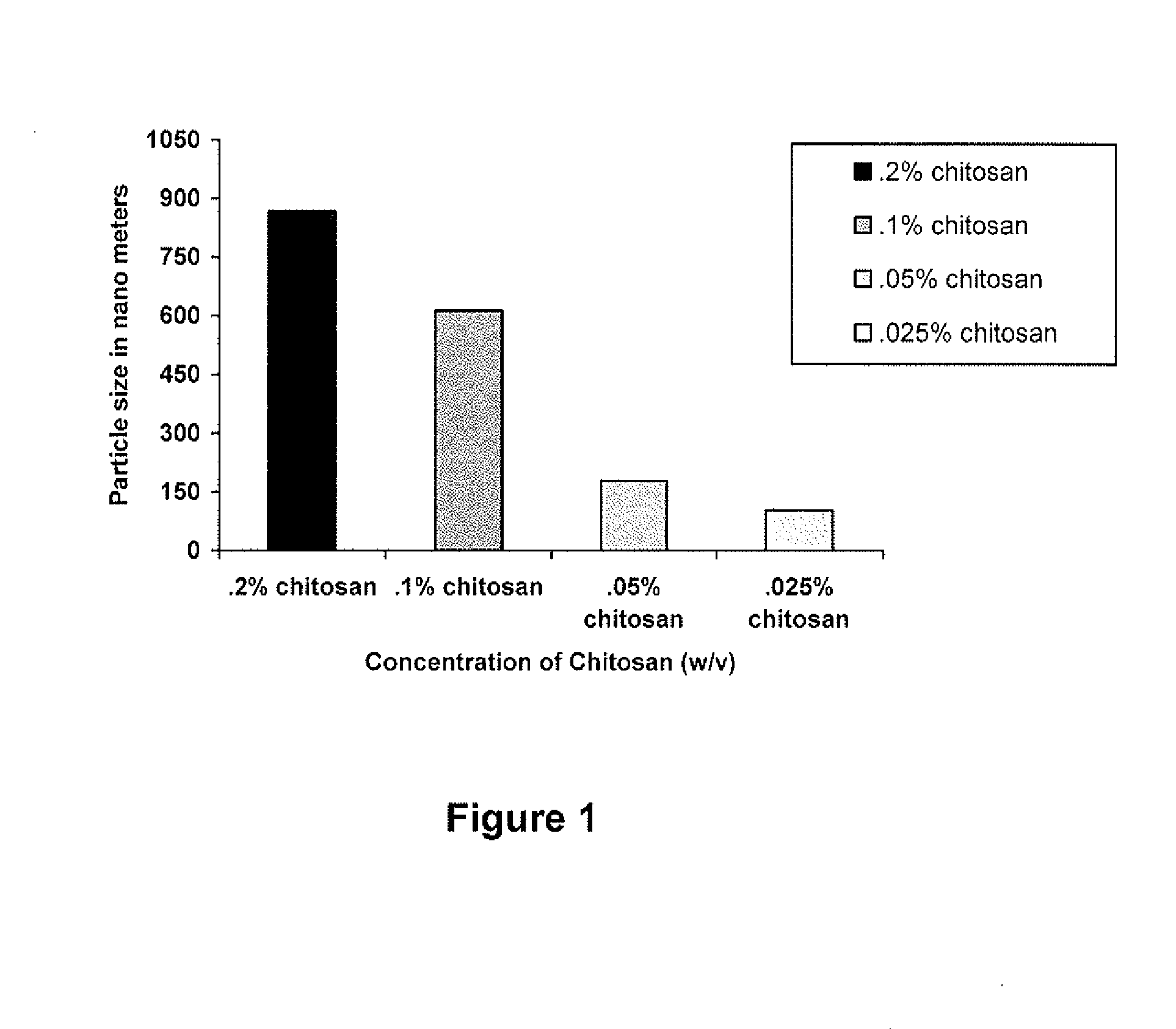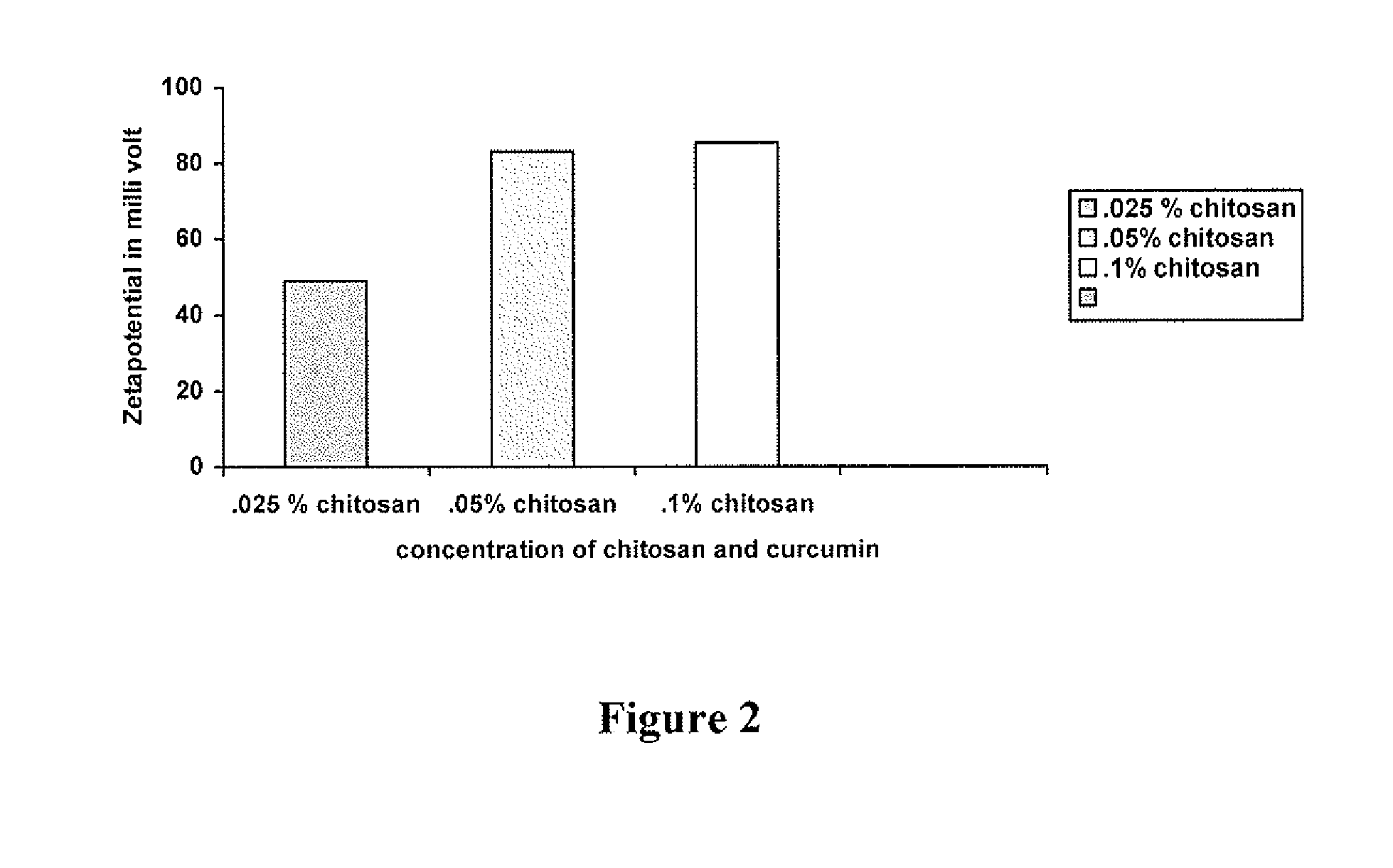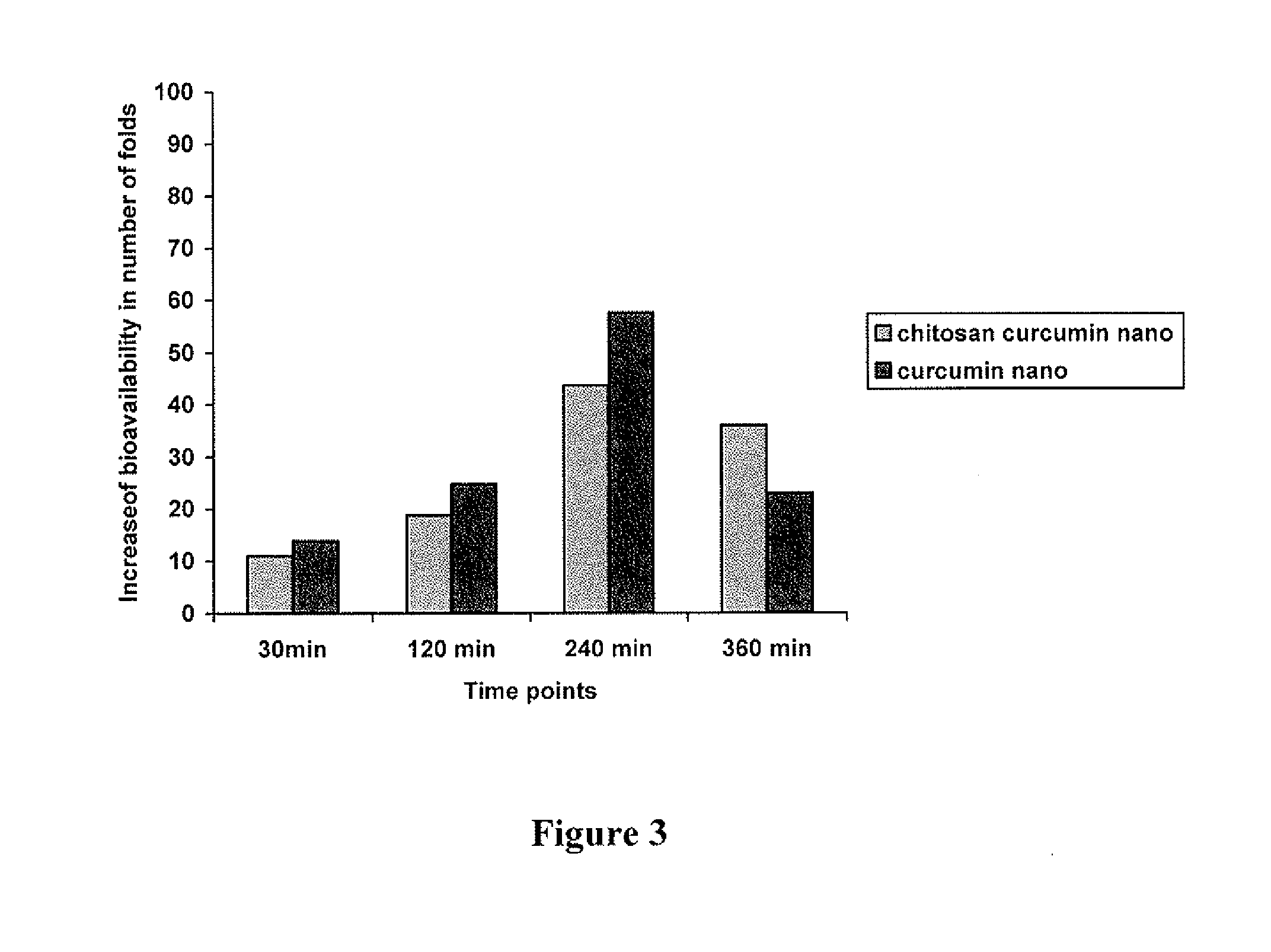Curcumin nanoparticles and methods of producing the same
a technology of curcumin and nanoparticles, which is applied in the field of curcumin nanoparticles, can solve the problems of poor bioavailability, inability to detect high concentrations of the substance in the body, and inability to detect high concentrations of the substance in the body, and achieves the effect of lowering the blood glucose level
- Summary
- Abstract
- Description
- Claims
- Application Information
AI Technical Summary
Benefits of technology
Problems solved by technology
Method used
Image
Examples
example 1
Preparation of Curcumin Bound to Chitosan Nanoparticles
[0085]1.1 Preparation of Chitosan Nanoparticles
[0086]A clear solution of 0.2% Chitosan (w / v) in 1% acetic acid was prepared by heating the mixture to 75° C. The mixture was rapidly cooled to 4° C. and this process was repeated several times till a solution of chitosan was obtained. This solution was then heated to 75° C. again and sprayed under pressure into water kept stirring very rapidly at 4° C. This ensured production of uniformly dispersed chitosan nanoparticles which can be concentrated by centrifugation
[0087]1.2 Loading Curcumin on Chitosan Nanoparticles
[0088]A clear solution of 1 gm of curcumin in 1000 ml of absolute ethanol was added under pressure to vigorously stirred aqueous suspension of chitosan nanoparticles in 1% acetic acid and the resulting suspension was stirred overnight at 200 -1400 rpm at room temperature to load curcumin on the chitosan nanoparticle.
example 2
Preparation of Curcumin Nanoparticles
[0089]1 gm of curcumin was dissolved in 1000 ml of absolute ethanol. The solution was kept at 40° C. and then sprayed under nitrogen atmosphere and high pressure into 0.1% aqueous acetic acid solution which was kept stirring at 200 -1400 rpm at room temperature. This lead to the production of uniformly dispersed curcumin nanoparticles. The particle size can be controlled by varying the pressure at which curcumin solution is sprayed into 0.1% aqueous acetic acid kept at different temperatures (25° C. -40° C.).
example 3
Biophysical Characterization of Nanoparticles
[0090]3.1 Particles Size Measurement by Dynamic Light Scattering
[0091]Dynamic light scattering (DLS) was used to measure the hydrodynamic diameter and size distribution (FIG. 1.1-1.2). Dynamic light scattering (DLS) experiments were performed (scattering angle=90°, laser wavelength=632.8 nm) on a 256 channel Photocor-FC (Photocor Inc., USA) that was operated in the multi-tau mode (logarithmically spaced channels). During the titration process, a few milliliters of the sample was drawn from the reaction beaker and loaded into borosilicate cylindrical cell (volume=5 ml) and DLS experiment performed. The data was analyzed both in the CONTIN regularization and discrete distribution modes (multi-exponential). The CONTIN software generates the average relaxation time of the intensity correlation function, which is solely related to Brownian dynamics of the diffusing particles for dilute solutions. The intensity correlation data was force fitted...
PUM
| Property | Measurement | Unit |
|---|---|---|
| Temperature | aaaaa | aaaaa |
| Temperature | aaaaa | aaaaa |
| Temperature | aaaaa | aaaaa |
Abstract
Description
Claims
Application Information
 Login to View More
Login to View More - R&D
- Intellectual Property
- Life Sciences
- Materials
- Tech Scout
- Unparalleled Data Quality
- Higher Quality Content
- 60% Fewer Hallucinations
Browse by: Latest US Patents, China's latest patents, Technical Efficacy Thesaurus, Application Domain, Technology Topic, Popular Technical Reports.
© 2025 PatSnap. All rights reserved.Legal|Privacy policy|Modern Slavery Act Transparency Statement|Sitemap|About US| Contact US: help@patsnap.com



